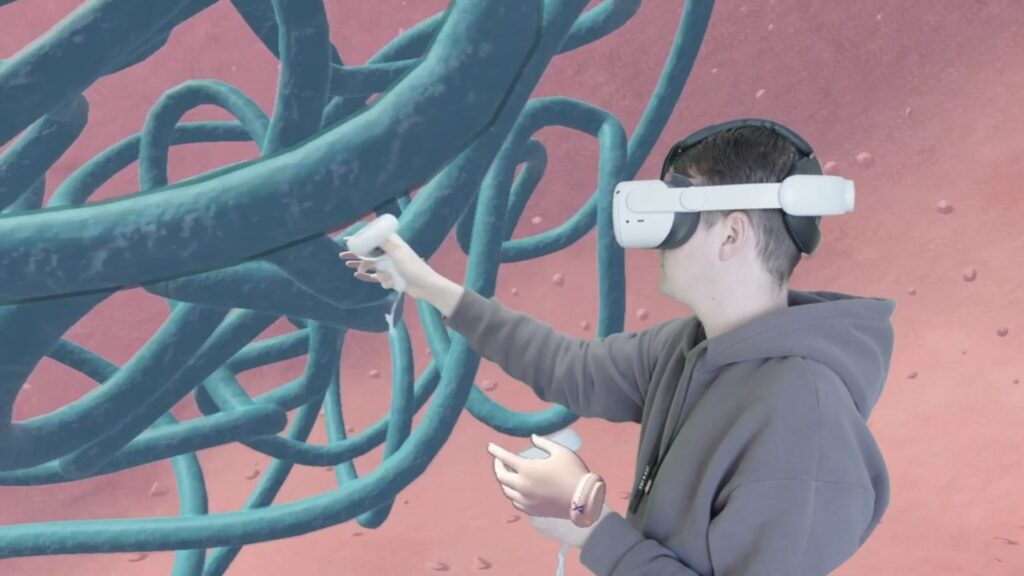

In today’s educational landscape, technology plays a pivotal role in shaping how students learn and interact with the world. One of the most transformative technologies making its way into classrooms is virtual reality (VR). With the market now offering a variety of VR devices at accessible price points—such as the Meta Quest device, Lenovo VR headsets, and Pico VR headsets—schools have an unprecedented opportunity to enhance interactive learning experiences. This article explores why schools should embrace VR in schools and how these devices can revolutionize education.
The availability of cost-effective VR headsets for education means that schools can now consider integrating this technology without a hefty investment. For example, if a school invests in a class set of just 10 VR devices, it unlocks a vast array of immersive educational experiences for students across various subjects.
This investment paves the way for virtual reality in education, where students can explore environments and scenarios that were previously inaccessible. Whether it’s diving into the depths of the ocean, exploring outer space, or dissecting a virtual organism, VR makes learning both engaging and interactive.
One of the significant advantages of adopting VR in the classroom is the extensive library of educational VR apps available. For instance, Noun Town offers an immersive language learning experience where students can practice new languages in a virtual environment that mimics real-life interactions.
Noun Town Immersive Language Learning:

XReadyLab Eduverse:
At XReadyLab, we offer the Eduverse, a platform that allows students to dive into the microscopic world of cells, navigate through human organs down to the molecular level, and conduct physics and chemistry experiments without the limitations of a physical lab.
Immerse students in organs, cells, and advanced science labs.
For a curated list of top-notch educational VR applications suitable for K-12 learning, check out our selection:
Top VR Education Apps for K-12 Learning: Learn More

When it comes to selecting the right VR devices for educational purposes, we at XReadyLab recommend the Meta Quest 2/Pro and Pico Neo 3/Pico 4. Here’s why:
While there are several options on the market, including Oculus (now known as Meta Quest), Lenovo VR in education, and Pico VR for classrooms, it’s essential to consider factors like content availability, ease of use, and cost.
For a detailed educational VR headsets comparison, schools can evaluate factors such as device specifications, content libraries, and pricing to determine the best VR headset for learning.

The potential of virtual reality in education is vast. It not only enhances traditional learning but also introduces new ways for students to interact with content. VR provides immersive education experiences that make complex subjects more accessible and engaging.
For more educational VR applications suitable for K-12 learning, explore our curated selection:
Integrating VR into the classroom doesn’t replace teachers; instead, it strengthens their role by providing new tools to facilitate learning. VR educational tools for teachers enable educators to create interactive classrooms where students are active participants in their education.
Adopting VR in schools offers numerous advantages:

The integration of virtual reality in education is more than a trend; it’s a step towards modernizing learning and preparing students for a technologically advanced world. By investing in devices like Meta Quest, Lenovo, and Pico VR headsets—starting at approximately $299 per device—schools can offer students unparalleled educational experiences.
With a relatively small investment, such as a set of 10 VR devices, schools unlock a multitude of possibilities for interactive learning VR, fostering a more engaging and effective educational environment. It’s an opportunity to inspire curiosity, encourage exploration, and enhance the overall learning experience.
Ready to Transform Your Classroom?
At XReadyLab, we’re committed to helping schools harness the power of VR technology. Contact us to learn more about our VR solutions and to request a demo.
👉 Request Your Free Demo Today
Frequently Asked
We prodive VR biology, VR physics, and VR chemistry simulations. Please, check our catalog.
Please, fill the form to get demo labs for free.
Please contact our customer support service at support@xreadylab.com or book a call with the team to find out the conditions and book the VR class set up at your school.
Subscription to XReady Lab interactive VR labs. If you are a school, then you are also given access to the VR classroom system. VR class system helps you easily launch VR lessons for a large number of students, follow the experience of each student, as well as customise the content without developers.
We adhere to the world’s generally accepted recommendations and research. Our products are suitable for children from 12 years old.